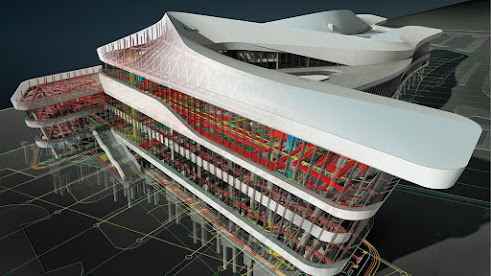How BIM Services Improve Collaboration in Construction Projects
In the ever-evolving world of construction, the need for effective collaboration among project stakeholders is paramount. Construction projects involve multiple teams, each with its own set of responsibilities, and often these teams work in silos, which can lead to communication breakdowns, errors, and delays. This is where Building Information Modeling (BIM) services and the expertise of a BIM services provider come into play. BIM services have transformed the building business by fostering more collaboration among all parties involved.
In this blog post, we will explore how BIM services, including MEP BIM services, have become a game-changer in improving collaboration within construction projects.
Understanding BIM Services
Before diving into the ways BIM services improve collaboration, let's first establish what BIM services are. BIM is a digital representation of the physical and functional qualities of a structure. It's a 3D model that contains all the necessary information about a construction project, from architectural designs to structural elements and mechanical, electrical, and plumbing (MEP) systems. BIM services involve the creation, management, and utilization of these models throughout a project's lifecycle.
Enhanced Visualization
One of the key benefits of BIM services is enhanced visualization. Traditional 2D drawings and blueprints might be difficult to read for non-technical stakeholders. BIM models, on the other hand, provide a 3D visual representation of the entire project. This makes it easier for everyone involved, from architects to contractors to clients, to understand the design intent and project scope. With better visualization, collaboration becomes more effective as misunderstandings and misinterpretations are reduced.
Real-time Collaboration
BIM services allow project stakeholders to collaborate in real time, regardless of their physical location. Members of a team can access and work on the same BIM model at the same time, whether they are in the same office or on different sides of the world. This real-time collaboration promotes a smoother flow of information, allows for quick decision-making, and reduces the need for time-consuming meetings and exchanges of paper-based documents.
Clash Detection and Coordination
MEP BIM services, in particular, play a vital role in improving collaboration by detecting clashes and coordination issues early in the project lifecycle. MEP systems often run through complex pathways within a building, and clashes between systems can lead to costly rework during construction. BIM models can identify these clashes before construction begins, allowing teams to resolve them in the virtual environment. This proactive strategy avoids on-site problems and ensures that systems work in unison.
Data Integration and Interoperability
BIM services facilitate data integration and interoperability among different software applications used by various project stakeholders. This means that architects, engineers, contractors, and facility managers can use their preferred software tools while still accessing and contributing to the central BIM model. This interoperability streamlines data exchange and reduces the risk of data loss or corruption, fostering better collaboration.
Improved Decision-Making
Effective collaboration relies on informed decision-making. BIM services provide access to a wealth of data embedded in the model, such as cost estimates, material specifications, and construction schedules. This data-driven strategy allows project teams to make informed decisions based on current and accurate information, lowering the chance of costly errors and delays.
Conflict Resolution
Conflicts are an inevitable part of construction projects, but how they are managed can significantly impact the project's success. BIM services offer a platform for collaborative conflict resolution. When conflicts arise, project stakeholders can review the BIM model together, propose solutions, and reach a consensus before moving forward. This proactive strategy reduces conflicts and keeps the project on pace.
Asset Management and Facility Operations
The advantages of BIM services go beyond the construction phase. When a building is finished, the BIM model is a great tool for facilities management and operations. It houses a vast database of information regarding the building's components, systems, and maintenance requirements. This data can be used by facility managers to optimize maintenance schedules, save operational costs, and guarantee the building runs efficiently.
Conclusion
BIM services have emerged as a powerful tool for improving collaboration in construction projects. Whether it's enhancing visualization, enabling real-time collaboration, detecting clashes, promoting data integration, or facilitating informed decision-making, BIM services provide a holistic solution for bringing together project stakeholders and streamlining their efforts. MEP BIM services, in particular, play a crucial role in ensuring that mechanical, electrical, and plumbing systems work in harmony, reducing costly rework and delays. As the construction industry continues to evolve, BIM services are expected to play an even more central role in fostering collaboration and delivering successful projects.




Comments
Post a Comment